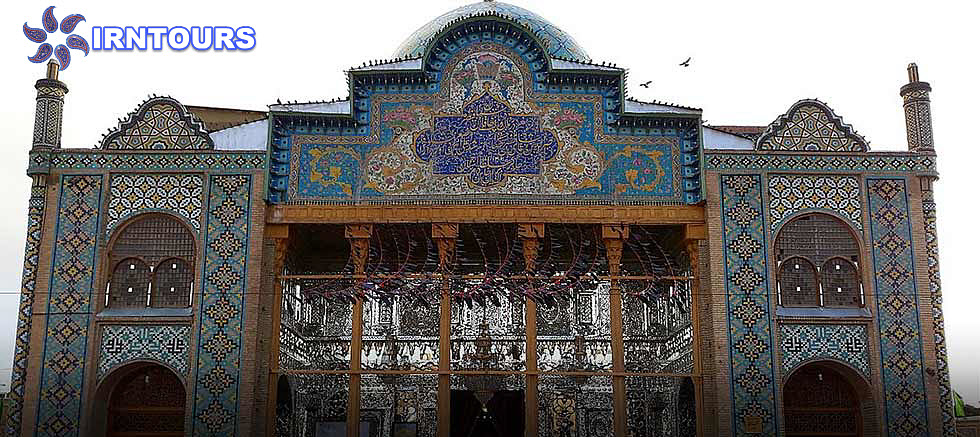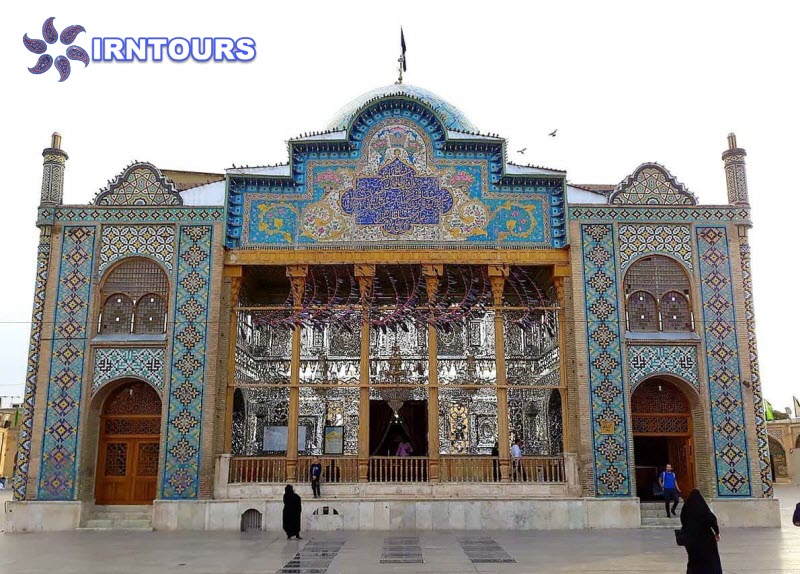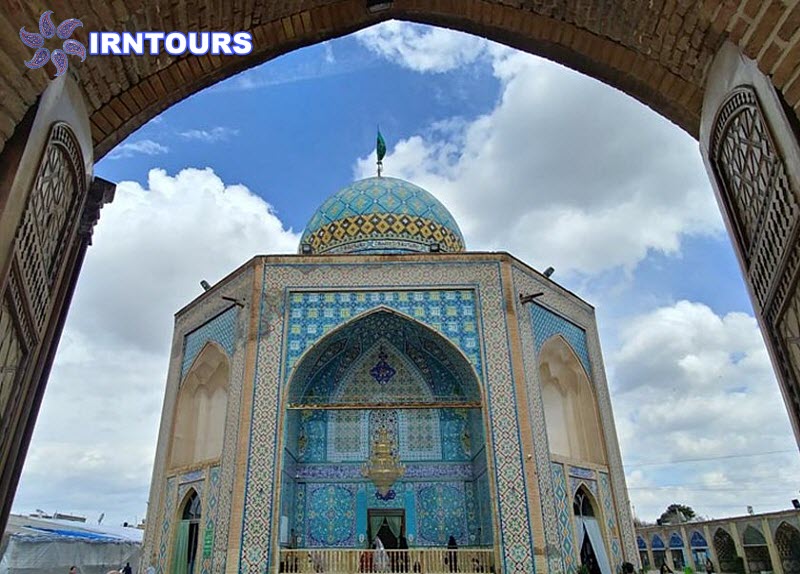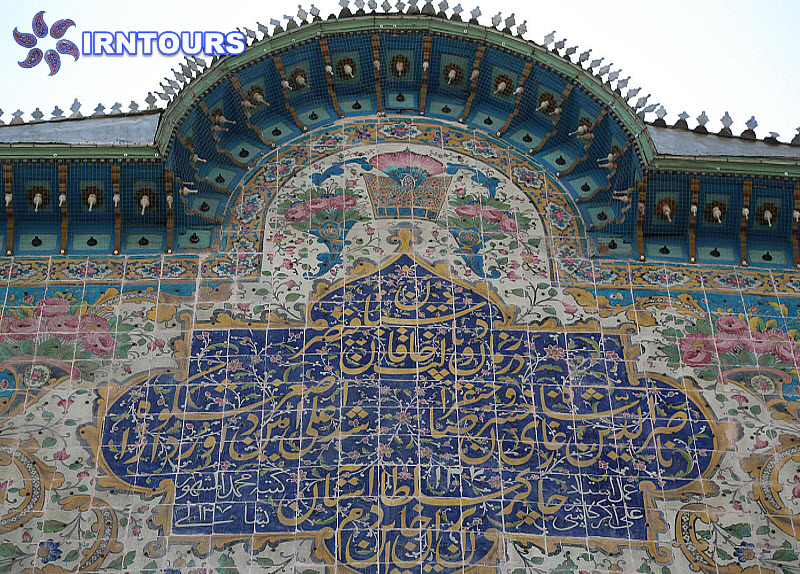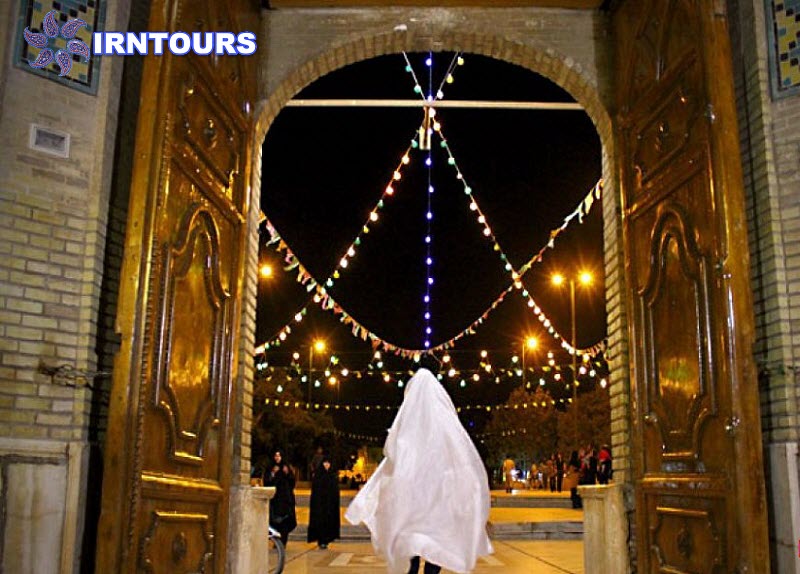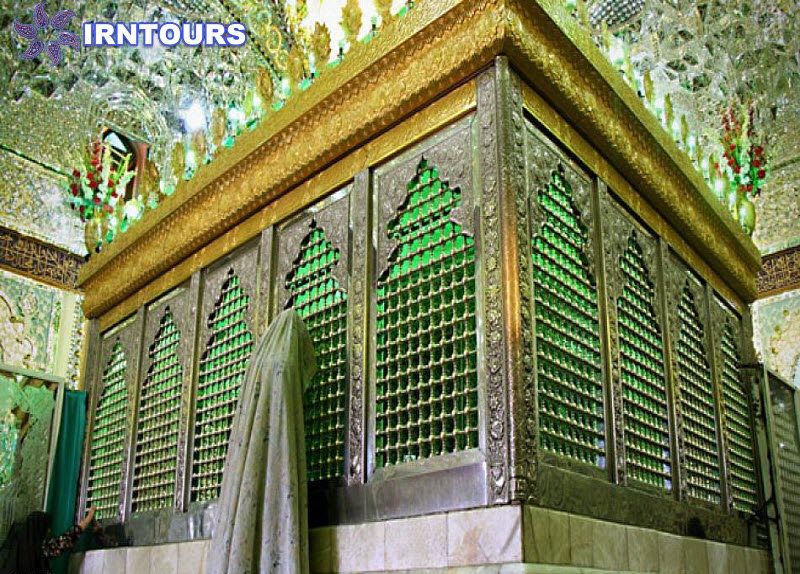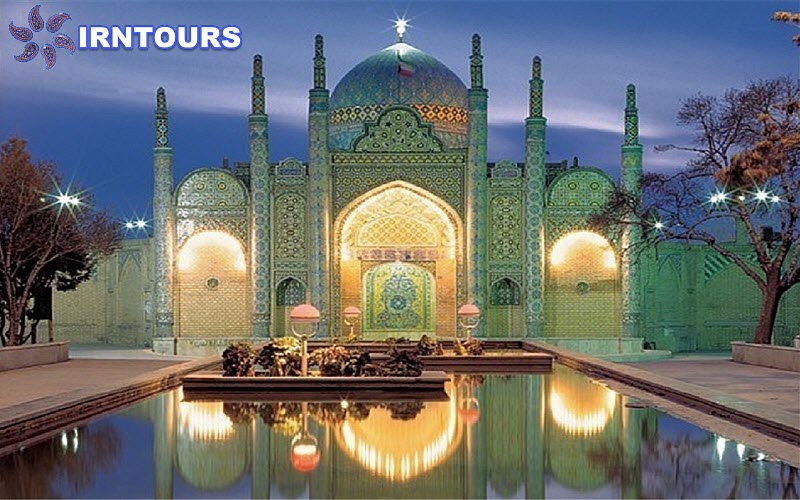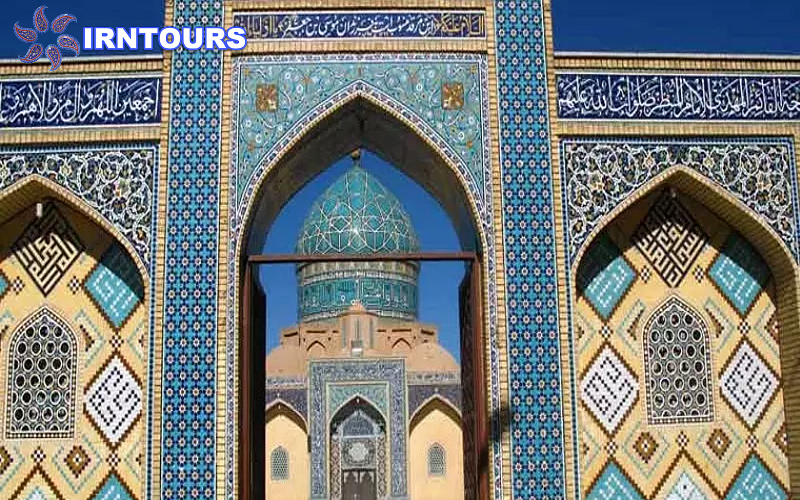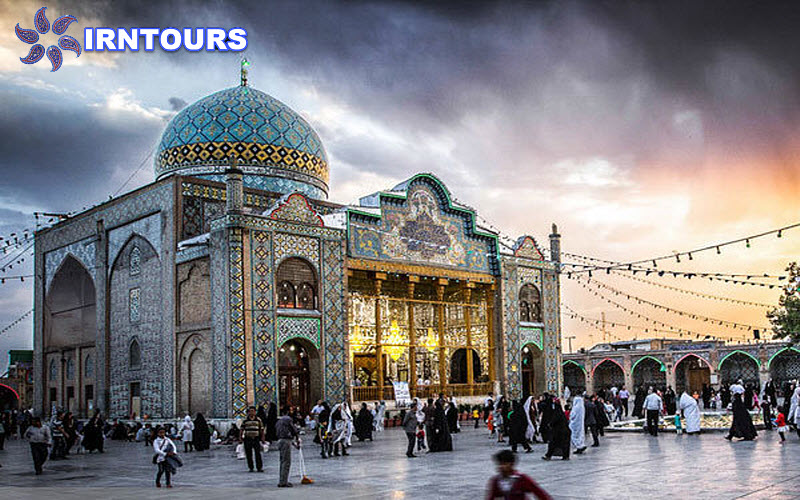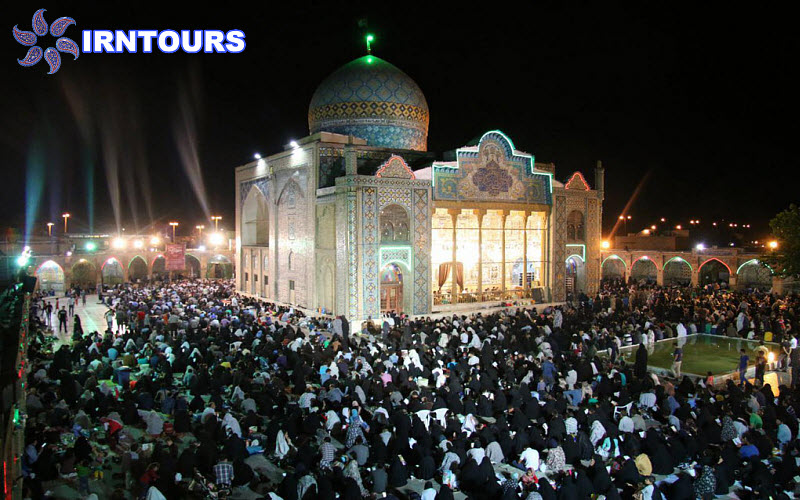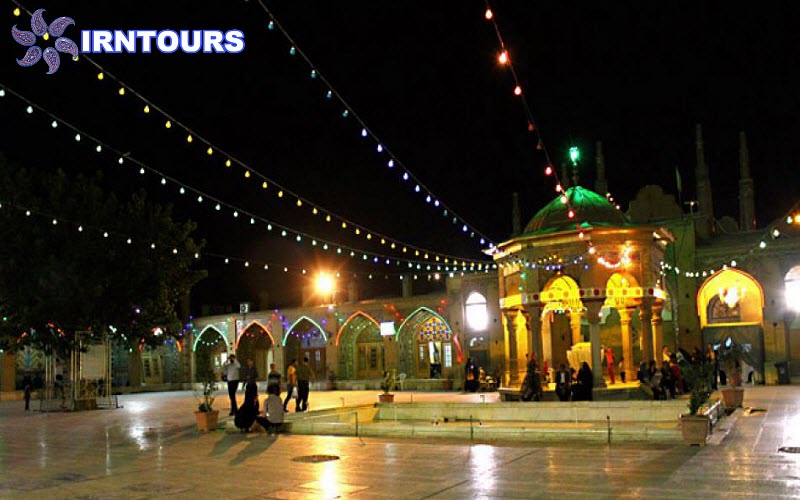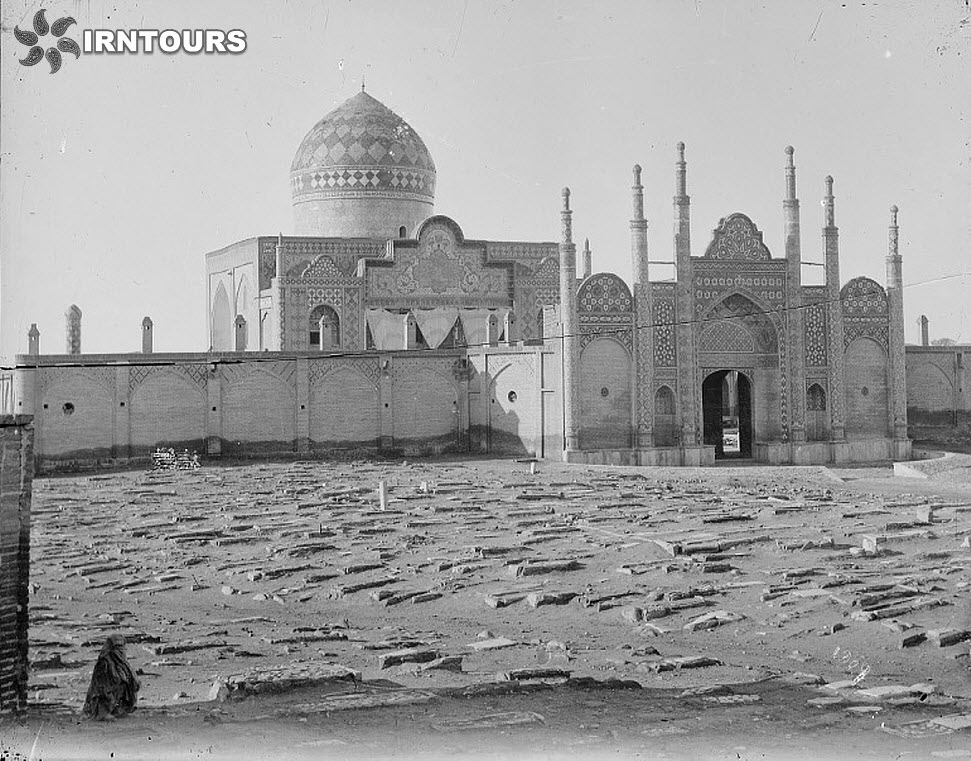
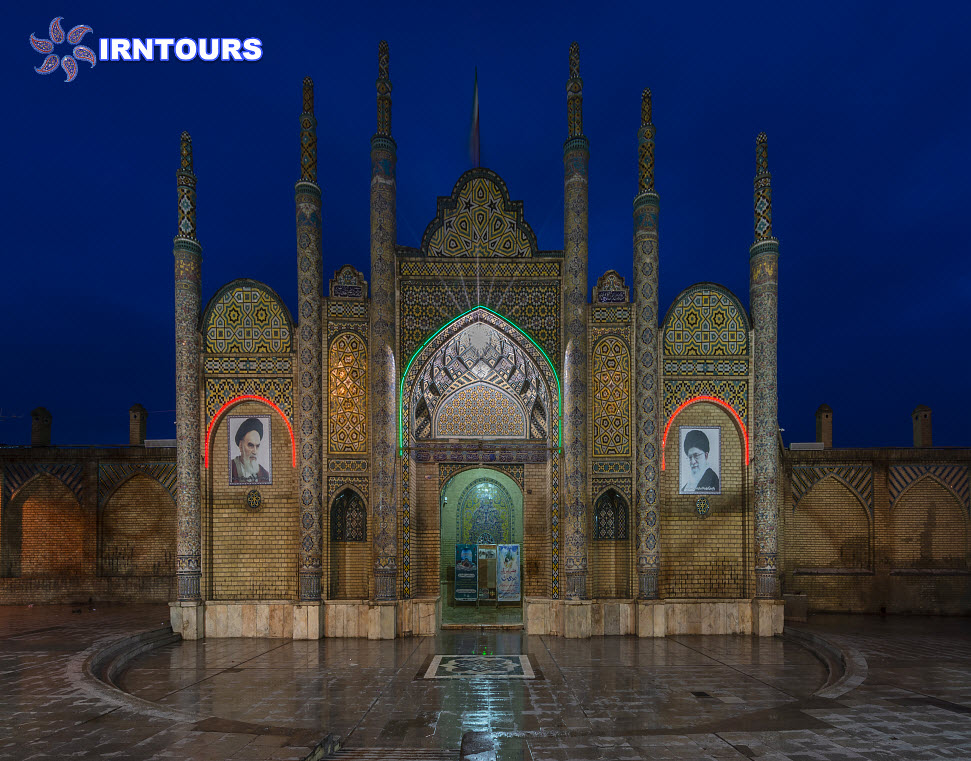
About Imamzadeh Hossein ( Qazvin )
Imamzadeh Prince Hossein (a.s.) is the son of Imam Reza (a.s.), whose tomb is considered one of the sights of Qazvin. This historical structure has very beautiful decorations in the field of mirror work, tile work, etc., which dazzle the eyes of every viewer. Prince Hossein Imamzadeh was registered as one of Iran’s national monuments on February 10, 1940 due to its historical and architectural importance.
The blessed mausoleum of Prince Hossein, the son of Imam Reza (a.s.), is one of the important shrines of Qazvin city. He was with him during this trip, he died due to illness and was buried in the same place.
Before entering Imamzadeh, you will have the feeling of visiting a historical building. But as soon as you step into the courtyard, thanks to the presence of a large number of pilgrims and tourists who are engaged in pilgrimage and need, you will feel a pleasant spirituality.
The oldest and most beautiful work in Imamzadeh of Shahzad Hossein (AS) is a carved wooden door that dates back to 1559.
- Address: Qazvin Province, Qazvin City, Salamgah St
- To visit Imamzadeh, you have to go to Salamgah Street or Bab Al-Janeh. Using city buses of Qazvin, the line from Azadi Square terminal to 22 Bahman Square terminal, you should get off at Salamgah street and near Imamzadeh station.
History of Imamzadeh Prince Hossein Qazvin
Imamzadeh Hossein was known to the people from the end of the fifth century and the beginning of the sixth century, and in the sixth century the people of Qazvin visited him.
In addition, the oldest book that mentions the tomb of Prince Hussein is the book “The History of Qazvin and Virtues” written by Hafiz Abu Ali Khalil bin Abdullah bin Ahmad Qazvini.
Another person who wrote about Imamzadeh is Abu al-Qasim Abdul Karim bin Muhammad bin Abdul Karim Rafei Qazvini, who mentioned him in the famous book “Al-Tadwin Fi Zikr Akhbar”
The condition of the Imamzadeh building of Prince Hossein is not clear until the 8th and 9th centuries; But the existing works such as the wooden shrine on the tomb show that Imamzadeh had excellent construction during these centuries. This exquisite wooden shrine is considered one of the masterpieces of carving and knotting.
During the Mongol invasion and subsequent wars, as well as the conflicts that took place at the beginning of the Safavid period, the tomb structure was severely damaged. Of course, some people have said that Imamzadeh was repaired during the reign of Sultan Al-Jaytu, the most powerful ilkhanate king, and his son; But there is no valid document to confirm this claim.
After Shah Tahmasab chose Qazvin as the Safavid capital; He paid special attention to Prince Hossein’s Imamzadeh and ordered its reconstruction. Zainab Begum, his daughter, was also interested in Imamzadeh; According to the mosaic tile inscription in Imamzadeh, the head of the complex was built by his order in 1630 and an exquisite and beautiful wooden box was installed on his grave.
The Safavid period coincided with the expansion of the buildings around Imamzadeh and this place became one of the main places of pilgrimage for the people of Qazvin city. During the reign of Naser al-Din Shah Qajar, Agha Baqer Isfahani nicknamed Saad al-Sultaneh, the governor of Qazvin, by the order of Mirza Ali Asghar Khan Atabak and at his expense, repaired and restored the dilapidated parts of Imamzadeh, such as the wall around the court. He also added parts such as the mirrored porch on the north side, the dome tiling decorations, the mirroring of the interior spaces, the cells around the imamzadeh, and two gates in the north and south of the courtyard to the imamzadeh. After the annexation of the northern porch, the inscription belonging to Zainab Begum, which was located on the northern side, was moved to the top of the southern porch.
In recent years, Imamzadeh has been well repaired and buildings have been added to it, among which the monument of Mohammad Ali Rajaei can be mentioned. In the rooms around Imamzadeh, several Qazvini martyrs of the eight years of holy defense, including Abbas Babaei, are buried.
This historical monument was registered as one of Iran’s national monuments on February 10, 1940 with registration number 339.
Different parts of Imamzadeh Prince Hossein Qazvin
- Imamzadeh of Prince Hossein (AS) generally consists of three parts: the threshold, the court, and the mausoleum.
Imamzadeh has two large entrances in the north and south, and a large courtyard is located between them. The northern entrance, which evokes the entrance gates of the cities during the Safavid and Qajar eras, has an archway and 6 minarets, each of which is decorated with beautiful tiling and moqrans. The main entrance of the Imamzadeh is very magnificent and long, and each door has a knocker, under which the words “Ya Mufteh al-Abowab” are written in naskh script. There is an inscription on it that dates back to 1268 AH and contains 12 lines of poetry on a blue and white tile background.
After the main door, you will reach Jalokhan, which is crescent-shaped, 18 meters long and 10 meters wide. This section, which has plinths and marble paving, is connected to the wide courtyard of Imamzadeh.
- Apron : The courtyard of Imamzadeh is rectangular in shape and the tomb of Prince Hossein is located at the southern end of the courtyard. On both sides of the main entrance and behind the arches, a total of 10 rooms with balconies can be seen. On the other three sides of the courtyard, there are 52 arches with beautiful tiling, each of which is four meters long and two meters wide. The floor of the courtyard is covered with ordinary stone, the plinths, the floor of the arches and the cells are covered with marble. The courtyard has two doors along the main axis of the mausoleum, and in front of the entrance, there is a large octagonal-shaped saqaqhana, with the date 1921 engraved on its inscription.Around the courtyard, there are porches decorated with tiles in different designs. In the distance between the northern porch and the tomb, a large pond can be seen, which has given freshness and a new spirit to Imamzadeh. From other parts of the courtyard, we can mention Hazrati’s kitchen in the southwest, Hosseinieh in the southeast, and two small courtyards in the east. From the south door of Imamzadeh, you can also reach Golzar Shahada and the cemetery.
- North porch : In the northern part of Imamzadeh, you can see a 20-meter-long, 7-meter-wide, and 10-meter-high porch with two carved wooden columns, a gabled roof, and two large shoe racks, and it leads to the yard through stairs. The southern wall of the porch is completely decorated with mirror work and a gabled roof covers it from the outside. Above the shoemakers, there are two thrones that lead from the north to the courtyard and from the east and west to the porch. In the southern part of each shoe store, two rooms have been built, which can be entered from the northern portico.
- Imamzadeh Tomb : The mausoleum is a hut-like building, which is considered to be the tomb of Prince Hossein (AS) in the middle of an exquisite shrine. You can see all kinds of Iranian Islamic art from seven-color clay tiles to mirror work here. In addition, plinths made of tiles with a prominent floral design are visible in the tomb, which belong to the Safavid period.The shrine has 12 sides from the inside, four porticoes are built on its four sides, and it is possible for pilgrims to enter from the porch and the northern portico. The dome is placed between four porches and its design is the type of Safavid domes. You can also see the beautiful art of tiling in the dome. While you are looking at the dome, take a look at the ceiling of the mausoleum, which is decorated with verses from Surah Juma with calligraphy, gold color and mirror work.
In the western and eastern parts of the mausoleum, two porticos have been built, which are known as Balasar and Payanpa, and they have been decorated with plastering and tiling. In the eastern part, you can visit the tomb of three scholars of the 13th century Qazvin.
There are four entrance doors in the shrine, which is inlaid in the south, and the east and west doors are simple. The northern door, three meters high, two meters wide and 12 cm in diameter, is considered the most beautiful door of the shrine, which was made of very strong wood by the order of Shah Tahmasab in 1559. This door is decorated with the art of carving, and above and below it, the blessed names of the Holy Prophet (PBUH) and Imams of Athar (PBUH) can be seen in written script. - Imamzadeh Shrine :At first, Imamzadeh’s tomb was located in a wooden box with a length, width and height of two meters, which was considered one of the masterpieces of carving art. Then the silver shrine replaced it. The elegance and beauty of the wooden shrine was such that it is said that Naser al-Din Shah said after seeing it:
If they made a chest three times its weight from pure gold (the chest was made with pure gold equivalent to three times its weight), it would be cheaper than the current shrine.
In 1403, master Hasan bin Emad, known as Fakhr Zarandi, displayed the height of his art on this wooden box. There are two rows of inscriptions written in naskh script on the four sides of the box, the southern inscription gives explanations about the genealogy of Prince Hussein (AS) and the time of his death. In the eastern part, some prayers and greetings are engraved on the 14 innocents. An inscription containing two martyrdoms, Ayah al-Kursi and a part of the blessed Surahs Fatah and Muhammad (PBUH), as well as the name of Fakhruddin Hassan Zarandi and the date of completion of the shrine can be seen on the chest.
Tips for visiting Prince Hossein Imamzadeh
- To visit Imamzadeh, you can come from morning call to prayer until late at night.
- Imamzadeh Hossein, like other religious places in Iran, has special customs to enter, which you must observe when you are in this place.
- With the arrival of Muharram, many mourning delegations from Qazvin come to this Imamzadeh and give it another excitement.
- Sardar Bozorg Reservoir, Hamam Bilor (Stone Museum), Jame Mosque of Qazvin, Jame Mosque Reservoir and Chehelston Palace of Qazvin are among the attractions near Imamzadeh, which you will not miss visiting.

